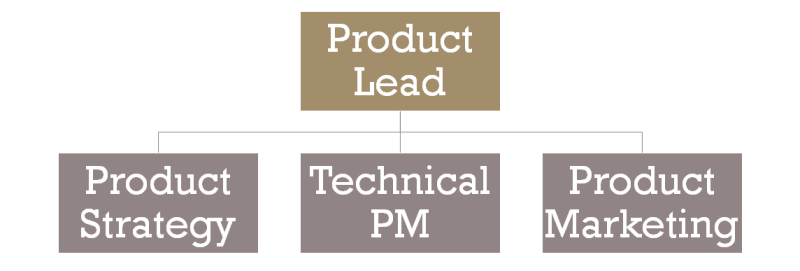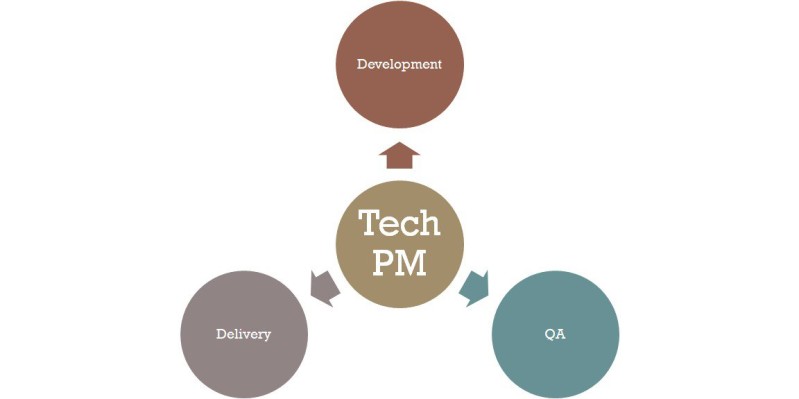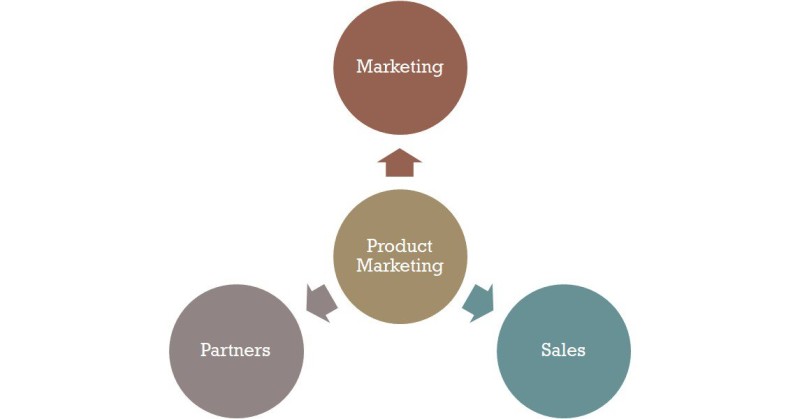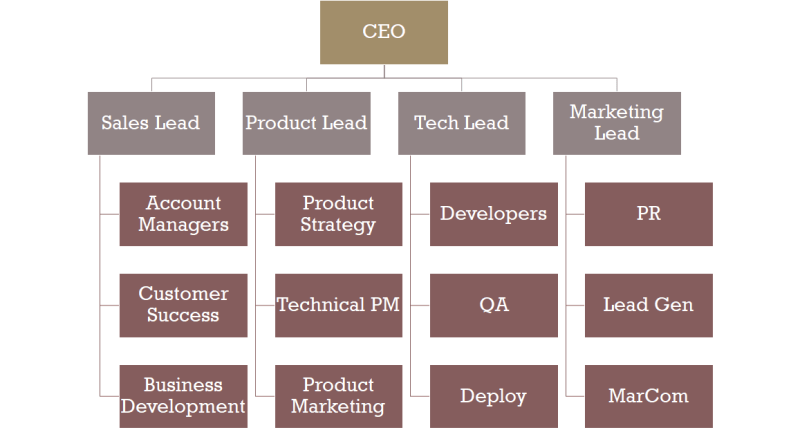Setting up a product team requires deep knowledge of what product management is and how it works.
It’s challenging to set up your product team and organization to work together. Getting them to apply the right level of product thinking to solve the right problems even more.
You need to understand how strategy fits together with discovery, marketing, and implementation.

Breaking Into a Product Team
Product management is a craft. People say it is a hard thing to learn and do, and I like to agree.
It is difficult to say what people should study when they intend to become product managers. Especially since there are no university degrees in product management.
I got into product management because I was not really an expert or even very good at anything.
That may sound irritating, but I tried to start a career as a software developer more than 30 years ago. In that time I managed to write code that worked, but others were a lot better at doing that.
I founded a company that was reselling software, so I had to do sales and marketing, but hey, it failed.
Primarily because my sales and marketing expertise and my drive to dig deep enough into these subjects were somewhat limited.
I started doing technical support, talking to customers every day on the phone about their issues, problems, needs, and ideas.
After a few years, I realized that I was quite good at connecting the dots and bringing people together:
I could understand customers’ needs, but I could not solve the problems — the developers had to do that.
I could understand customers’ wishes, but I was not good at telling them my answer — the marketing people had to do that.
So it was my job to connect the idea generation, business opportunity evaluation, building, and marketing parts together.
I had to create a flow of information through the organization.
That helped building products that helped both customers and my employers.
We called that product management.
The path to ‘product thinking.’
In the last years, a new concept known as ‘product thinking’ has been described widely in product management communities.
I understand product thinking as a way of establishing a culture and focus of a company around its products.
Everything the company and the employees do in their job relates to the things that end up as line items in invoices, e.g., products.
We need to emphasize that every day. It is, or hopefully will be the key responsibility of product organizations to help teams understand what their respective impact on the products is. They need to understand how, as a consequence, they can add to the success of the company.
Products are the things a company is selling. That may be physical products, like cars or pencils, digital services as software, apps, cloud services, or even time, as consultants, trainers sell, or anything else.
And coming from that standpoint, it may be argued if a free service like WhatsApp is a product. I definitely think so, and of course, you need product management to build something like that.
We need to be absolutely clear about what we’re building, why we are building it, and how it contributes to the success of our organization.
We need product people who think in product categories, not process categories, to achieve that clarity and communicate it across the organization and beyond its borders.

The Product Management Process
You may read about product management in many publications, and at the end of the day, it comes down to the three steps you’ll have to follow to build a successful product:
What does your product do?
You need to understand what your product is, what it does, what problem it solves, and who will use it and even pay for that.
If you get that, you can formulate what to build next, how to design it, what constraints to observe, and which limitations need to consider.
As soon as you achieve some insights, you get into the position to tell what you are going to build.
Do you know what problems you are solving?
Suppose you know what you’re going to build. You have to find out how. That results in new ideas and constraints and requires decent planning.
You’ll have to help the people who actually build your product with everything they need to know. And you’d also be responsible for making sure that the result of their efforts actually works and meets the initial product idea.
Have you found product-market fit?
The core responsibility of a good product marketing team is to execute a successful go-to-market strategy and product launches or releases.
You’ll have to combine the results of the building efforts with the initial product idea.
Then take the strategy and distill the information out of that.
This enables you to provide content to your marketing, sales, customer success, support, and other teams. These are the teams that go to the market so this content tells them everything they need to know.
The Three Pillars
Coming back to what product management is and what it should be, I see mainly three pillars:
Product Strategy
Technical PM
Product Marketing

Or better:

I am totally aware that I am oversimplifying the entire process and that many things are missing or a lot of industry specifics. But I’m sure you get the idea.
The interesting aspect of that structure is that product strategy and product marketing is outbound oriented. In other words, there’s a lot of market and customer involvement and a lot of external communication happening.
Meanwhile, technical product management is inbound oriented, focusing on the internal build, quality assurance, and deployment (packaging) processes.
Hiring a Product Team
I have been trying to hire product managers responsible for the entire process and breadth of managing a product or a service.
So I found myself hardly finding the right people.
I did have the honor and luck to work with some really amazing people, but finding them was hard.
Sometimes not filling open positions in a certain amount of time, slows your entire organization down and will cost money.
I ended up hiring different people for the positions and split my product teams according to their capabilities and talents.
It was a lot easier to find someone who was excellent in running, planning, and organizing build processes. These are the people that help developers, QA engineers, and DevOps teams build the product.
Meanwhile, I hired someone different who could overlook a product strategy, gather market and customer insights and develop a vision for a product for the future.
A third person would then collect internal information and combine it with the market trends to craft a message that convinces customers to buy.
As I said earlier, the positions for product marketing and product strategy are outbound focused. Hiring someone with a business background but not necessarily an MBA. A more outgoing person, interested in trends, and capable of listening to the ideas of others would be helpful.
That person often is also good at talking about their ideas and results. At least for the beginning, it should be easy to find a product manager and a product marketing person with a history in sales or marketing.
I ended up looking for developers who were good at organizing processes and teams for the technical positions. People who knew how engineers’ daily life looks like and tech-savvy people. They could understand technical constraints and support the teams in using the right tech stacks.
These people typically love not only their product but also their build quality.
Reporting lines
Marty Cagan wrote an excellent book about product management: Marty Cagan ‘Inspired’. He says that a product manager is not the boss of anyone, so she should be capable of handling teams without a defined authority.
The product manager should report to a product lead, and the team members of a product team should report to their respective managers, like the engineering lead.

The product lead oversees the product vision for the organization's entire portfolio, and the product managers manage a subset, like a single product or sometimes just a feature. In a larger organization, that could be the user signup process or the iOS version, whereas her colleague runs the Android product.
Product management is the art of getting the right product built the right way. Of course, no one can do that alone, and a typical product manager is not even an expert in anything in particular, like marketing sales or engineering professionals. The product manager’s responsibility is to organize and manage a product and help the organization through that process.
Product managers don’t do things; they’re responsible for getting things done. As a product manager, you rely heavily on the capabilities of the experts around you, and you need to be able to have trust in their capabilities.
If we look at the product management process again: Gathering insights and input could be handed over to a research department. Of course, you need to understand the results and reports, but you would not do it by yourself as a PM. You will also not be attending every customer conversation as the sales team does, so you rely on the facts and information your colleagues collect for you.
It is the sales team’s responsibility to collect customer wishes. The product managers need to make sure that this happens and that the information is collected and digested the right way.

As a technical PM, you’re not writing code. Instead, your focus is to explain precisely what your engineers will build, in what order, and supporting everyone involved in building and deploying your product. Most importantly, you’re responsible for ensuring that you match the agreed and promised delivery (in time or completeness).

As a product marketing person, you’re probably not writing papers for customers, and you’re also not designing brochures or shooting pictures for ads. You’re responsible for providing all the information your marketing team needs to do their best. You should also be responsible for planning and running product launches.

Product Team Organization
I suggest keeping the reporting lines the classical way and have strong sales managers lead salespeople, and strong marketers manage and lead marketing departments. These managers can hire the right talents in their departments and support them in their careers and daily tasks. They also are accountable for their team results and outcomes.

The product organization is responsible for connecting dots and getting the people in the departments to work together in product-oriented teams. The product organization strives for a product-market fit, the continuous process of identifying market needs and requirements and solving customers’ problems.
As a product manager, you love your product.
This article started as a vivid LinkedIn discussion, started by Andy Raskin.

Bernhard Hecker

Read also
Experience the new way of doing product management






